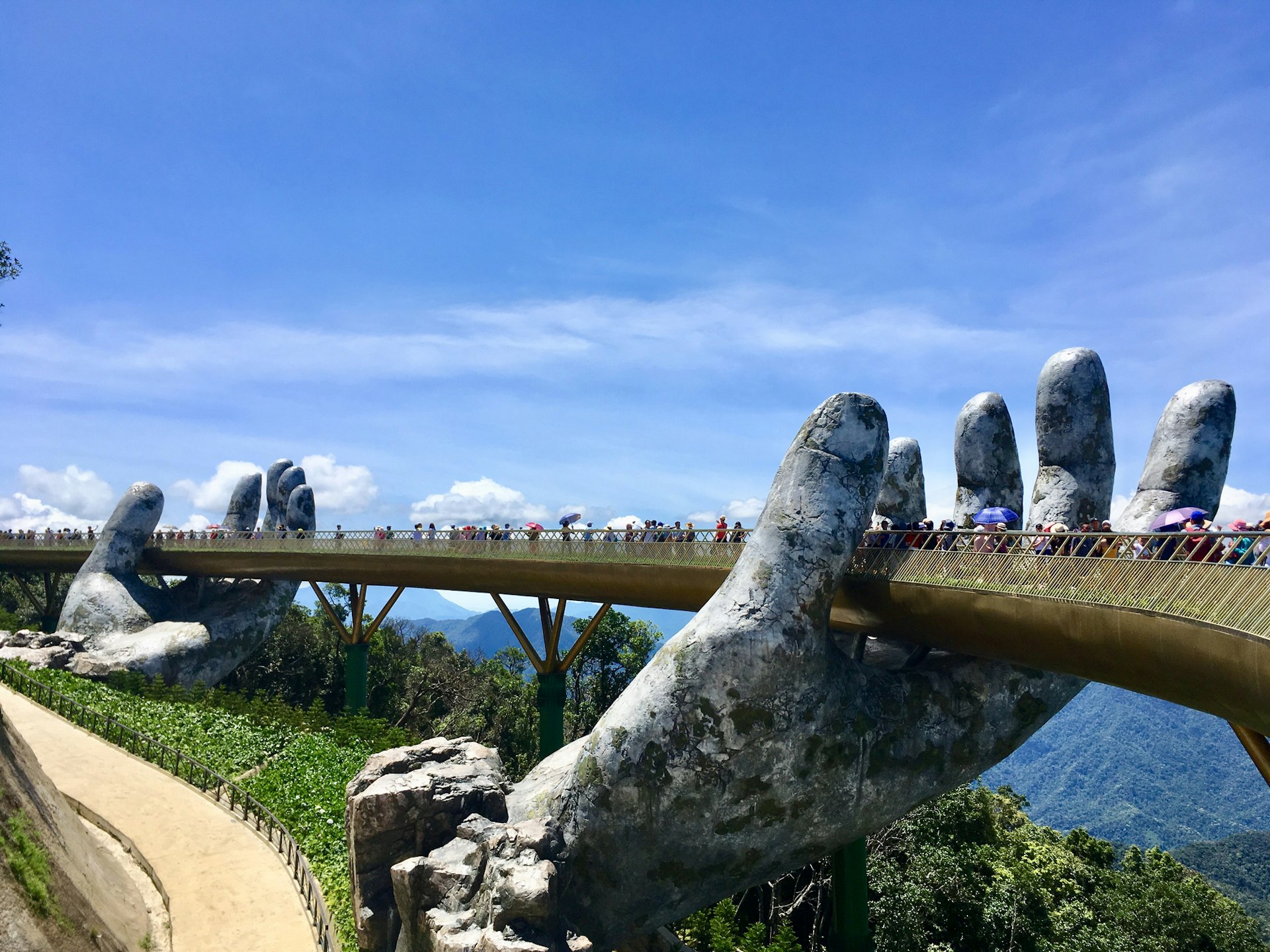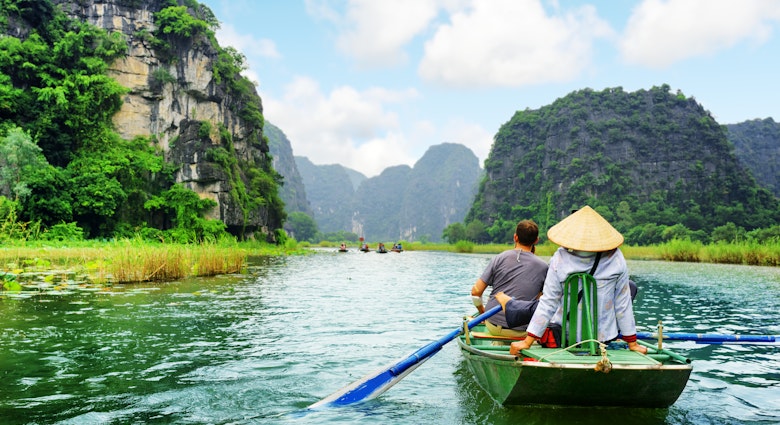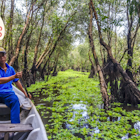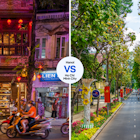Whether you’re planning to bask on the beaches, scramble through the jungles, time-travel in historic townships or set up as a digital nomad in hip Hanoi, the chances are you’ll need a visa to visit Vietnam, except for short visits of less than 15 days.
But there’s good news – while there’s red tape to wriggle through, many nationalities can apply for an E-Visa online, saving time and money.
Vietnam imposed tight COVID restrictions at the height of the pandemic, but these days, you can visit without a Covid test or proof of vaccination. Getting hold of a visa has also become easier, with a dedicated government portal for E-Visa applications. Here’s what you need to know about the entry requirements for Vietnam.

Who needs a visa to visit Vietnam?
Whether or not you need a visa to visit Vietnam will depend on where you live and how long you’re planning to stay. Citizens of neighboring nations in Southeast Asia, including Cambodia, Thailand, Malaysia, Singapore, Indonesia, and Laos, can visit for 30 days without a visa. Citizens of the Philippines can stay for 21 days visa-free, citizens of South Korea and Japan can stay without a visa for 15 days and citizens of Brunei and Myanmar can stay visa-free for 14 days.
How about travelers from Europe?
There’s good news for European travelers – citizens of Sweden, Norway, Denmark, and Finland can travel visa-free for 15 days, reflecting the fact that these countries were among the first foreign powers to recognize the Socialist Republic of Vietnam. British, German, French, Spanish and Russian citizens can also visit without a visa for 15 days.
What about everyone else?
Travelers from the rest of Europe and the rest of the world will need a visa to visit Vietnam, as will travelers from visa-exempt countries visiting for more than the approved number of days, and visitors coming for business or other non-tourism purposes.
How do I get a visa?
There are three ways to get hold of a visa. You can apply the old-fashioned way via the Vietnamese embassy or consulate in your home country (either in person or by post); you can apply for a Visa on Arrival via a Vietnamese visa agency; or you can apply for an E-Visa online before you travel.

How long are Vietnam visas valid?
Standard tourist visas are valid for 30 or 90 days. You can apply for either a single entry or multiple entries, and visas can be extended within Vietnam for an additional fee. For visas for business trips, contact your local Vietnamese embassy or consulate – there’s a list of overseas missions on the website of the Ministry for Foreign Affairs. Digital nomads generally travel on tourist visas.
What are the special visa rules for Phu Quoc Island?
Travelers visiting Phu Quoc – Vietnam’s best-loved tropical island – can stay for up to 30 days visa-free. This applies even if you don’t come from a visa-exempt country, but you must enter Phu Quoc by air. On arrival, you can apply for a visa allowing entry to the rest of Vietnam or stays of more than 30 days.
How do I apply for an E-Visa?
The government’s slightly confusing E-Visa portal is the place to apply for an electronic visa. These visas are valid for 30 days and allow a single entry. You can enter via any approved air, land, or sea border but the port of entry must be listed on your application. The process takes three working days, and the scheme is open to citizens of 80 countries, including most nations in Europe, the US, Canada, Australia, and New Zealand.
You’ll need to provide a high-resolution digital passport photo and a scan of your passport ID pages when you apply. Be sure to note down the registration number for your application – you’ll need this to access the downloadable PDF file containing your visa (print and carry two copies with you when you travel).
How do I apply for a Visa on Arrival?
If you fly into Vietnam and land at Tan Son Nhat International Airport in Ho Chi Minh City, Noi Bai International Airport in Hanoi, or Da Nang International Airport in Da Nang, you can apply for a Visa on Arrival via an online visa agency such as Vietnam Visa Center or Vietnam Visa, but this is a more expensive option.
In fact, this is a two-part process. As well as paying a fee for the online application, you’ll need to pay a second fee on arrival in Vietnam for the visa to be physically added to your passport. The online application takes two working days to process, but you can also pay extra for an expedited one-day or four-hour service.

How much does a Vietnam visa cost?
Visa prices vary depending on where you obtain your visa – travelers who apply online pay different fees to people applying in person or by post at embassies and consulates. For a standard 30-day E-Visa, the fee is US$25. Contact your local embassy or consulate for fees for in-person or postal applications.
To get a Visa on Arrival, you must first pay a fee to a visa agency for a "visa pre-approval letter". For a single-entry visa, this costs around US$17 for 30 days and US$25 for 90 days. For a multiple-entry visa, the fee is around US$20 for 30 days and US$65 for 90 days.
You’ll need to pay a second fee, known as a "Stamping Fee", when you reach Vietnam, using foreign currency. This costs US$25 for a single-entry visa and US$50 for a multiple-entry visa. Different fees apply for visitors from most of Africa and the Middle East and some countries in Asia.
Applying for a visa – the practicalities
Whether you apply online or in person at your local embassy or consulate, your passport should be valid for at least six months after your proposed date of exit from Vietnam. You can enter on or after the date of entry you declare on the application form, but you must still exit by the expiry date printed on your visa.
If you apply in person or by post, you’ll also need to provide some passport photos with your application form. If you apply online, you’ll need high quality digital passport photos; for a Visa on Arrival, bring two 4cm by 6cm photos to hand over when you pay the stamping fee.
Can I extend my visa in Vietnam?
It isn’t too tricky to extend a tourist visa while in Vietnam, but you’ll need to enlist the help of a local visa agency. The procedure can take up to a week and you must apply before your original visa expires. It may be possible to get an extension of 15, 30 or 60 days, depending on the visa you currently hold.
Fees vary from agency to agency and depend on the duration of the extension. In practice, extensions are easiest to arrange in Ho Chi Minh City, Hanoi, Danang and Hue. Note that additional fees apply if you apply to extend your visa in a different location to the city where you first arrived in Vietnam.












